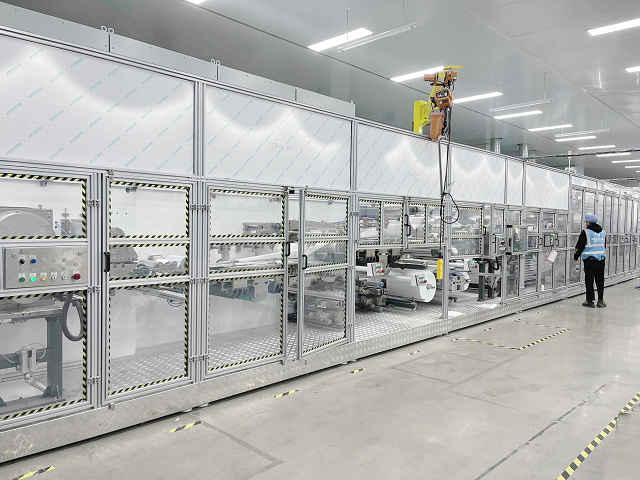Author:Haina Machinery Factory FROM:Diaper Machinery Manufacturer TIME:2024-12-19
In the world of parenting, one of the most significant concerns is managing the enormous quantity of diapers that newborns require. With an average newborn using around 10 to 12 diapers a day, the question arises: can a diaper machine effectively handle these needs? This article explores the functionalities of diaper machines, their suitability for newborn diapers, and considerations for parents looking to streamline their diapering process.
Diaper machines are designed to automate the process of diaper creation, typically used in commercial settings. These machines can produce various types of diapers, including those for infants, toddlers, and adults. Their primary purpose is to ensure efficient mass production, which can be beneficial for manufacturers aiming to meet the constant demand for diapers. However, understanding whether they can cater specifically to newborn diapers requires delving deeper into their operation and specifications.

Newborn diapers come in several varieties, including disposable, cloth, and eco-friendly options. Disposable diapers are the most commonly used due to their convenience, while cloth diapers offer a more sustainable choice. Newborn sizes are particularly crucial since they need to fit snugly to prevent leaks while still being gentle on sensitive skin. Each type has unique requirements, which impacts how a diaper machine would perform when tasked with producing them.

Modern diaper machines boast several key features that make them efficient. They can adjust to different sizes and absorbency levels, allowing for customizable diaper production. Some machines incorporate advanced technology for better material handling and waste reduction. The ability to switch between different diaper styles and sizes is essential when considering if a machine can accommodate newborn diapers specifically. Understanding these features helps clarify the machine’s versatility.
The capacity and speed of a diaper machine play a crucial role in determining its efficiency for newborn diapers. High-capacity machines can produce thousands of diapers per hour, making them suitable for large-scale production. However, speed must be balanced with quality control, especially for newborn diapers that require precise sizing and softness. Evaluating how quickly a machine can adapt to producing newborn-sized diapers is vital for manufacturers and retailers alike.
Diapers are made from various materials, including absorbent cores, non-woven fabrics, and elastic components. For newborn diapers, the choice of materials is critical, as these need to be super absorbent, soft, and hypoallergenic. A well-designed diaper machine must have the capability to process these materials effectively. Understanding the specific requirements for newborn diapers can help determine if a particular machine is suitable for this task.
Quality control is paramount when it comes to producing newborn diapers. Parents are understandably concerned about the safety and comfort of their babies. Machines that include robust quality control mechanisms can help ensure that every diaper meets stringent safety standards. This includes checking for the right size, absorbency levels, and the absence of harmful chemicals or allergens. Evaluating a machine's quality assurance processes is essential for manufacturers aiming to produce newborn diapers.
The ability to adapt designs based on market trends or consumer preferences is another crucial aspect of diaper machines. As the demand for eco-friendly or specialty diapers grows, machines that can easily switch between designs without extensive downtime become increasingly valuable. This flexibility is particularly important for companies looking to cater to specific demographics, including parents who prioritize eco-conscious choices for their newborns.

Investing in a diaper machine requires careful financial consideration. The initial cost, maintenance expenses, and operational efficiency all factor into the overall cost-effectiveness of producing newborn diapers. While high-quality machines may come with a hefty price tag, the potential for long-term savings through efficient production and reduced labor costs can make them worthwhile investments for manufacturers.
With growing awareness of environmental issues, many parents are opting for eco-friendly diaper options. Some diaper machines can produce biodegradable or compostable diapers, which significantly reduces waste. Understanding how a diaper machine can contribute to more sustainable practices is essential for manufacturers looking to align their products with current consumer values. The environmental impact of production methods is becoming an increasingly important consideration in the industry.
The diaper market is constantly evolving, influenced by consumer demands and trends. An effective diaper machine must be able to keep pace with these changes, producing not only traditional newborn diapers but also innovative options that cater to diverse parental needs. Staying informed about market trends can help manufacturers make strategic decisions regarding production capabilities and design adaptations.
In summary, diaper machines can indeed handle the production of newborn diapers, provided they are equipped with the right features and specifications. Factors such as production capacity, material compatibility, quality control, and design flexibility play pivotal roles in determining a machine's effectiveness. As the demand for various types of diapers continues to grow, manufacturers who invest in adaptable and efficient diaper machines will be better positioned to meet the needs of parents and caregivers. Understanding these aspects is essential for those in the diaper production industry to thrive in a competitive market.
